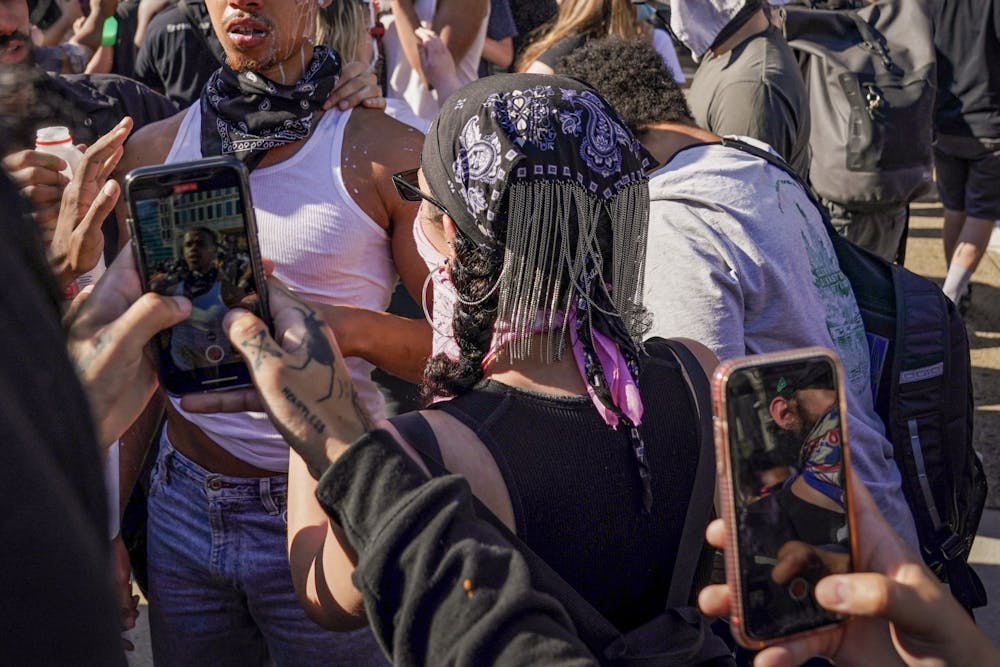
In Philadelphia, police reported that a Temple student suffered a serious head injury after being assaulted by an officer. In Buffalo, official accounts claimed that a 75-year-old protestor tripped and fell. The report of George Floyd’s death omitted crucial information leading up to his death. In the fight against systemic racism and police brutality, false reports emerged as a central issue. Though the problem of false police reports has existed for decades, viral cell phone footage highlights their frequency and devastating impact.
Cell phones make it so that America, and the world, cannot look away from the vivid brutality Black communities have already known for generations. People are confronted with horrific images and video clips of racism and bigotry.
Police misconduct is largely hidden from the public eye, and unions have taken extreme measures to ensure that negative allegations are inaccessible. However, as cell phone videos began exposing false police claims on social media, the sanctity of official reports is called into question. The police as an institution are often unfair and biased, but information disseminated by law enforcement is regurgitated uncritically by politicians and the press. Cell phone footage is now key to uncovering the truth as incidents of police brutality mount across the nation. This new form of testimony may be the most powerful tool as protestors demand justice and accountability.
As authority figures, police officers are expected to convey factual information. Their words have historically held more weight than that of the average citizen. But instances of police brutality have engendered the spread of misinformation in official reports, and corroded trust between police and civilians. While communities of color have long experienced racist, unjust policing, videos are exposing the truth to the rest of the world, one by one. Disparities between police accounts and viral videos have fueled public outrage and mistrust.
The police have the opportunity to craft their own reality through their reports, and protect themselves from disciplinary action through qualified immunity laws. Now, official reports of police brutality are being viewed with an increasingly skeptical public eye. This deterioration of faith in public institutions has enormous implications for the future.
Who can the public trust?
Individuals now turn to social media platforms like Twitter and Instagram to receive information. As someone who has long been told to look only to “credible sources,” untangling the truth has become a complex and multifaceted challenge.
Rebuilding trust begins with reforming public systems from the ground up. Police brutality and false reporting are not isolated incidents, and change can only be achieved through systemic reform. Although the use of body cameras has become more widespread in recent years, rules vary on whether officers are required to turn them on, and if they are released publicly. Officers nationally should be required to keep cameras turned on at all times, and their recordings should be accessible by the public and in court hearings. However, the notion that documenting police behavior will remedy the central issue of law enforcement violence is flawed, as police brutality persists even when body cameras are worn properly.
Universally, officers must be trained around the use of force, de-escalation, and report falsification. Furthermore, when officers violate these stringent guidelines, they must be held accountable and removed from duty. Officer misconduct complaints are addressed through an internal affairs unit within police departments. The strong culture of “brotherhood” within police departments often leads to lenient or no disciplinary repercussions. Police unions and in-house investigations are significant obstacles in police reform efforts, but they must be addressed to restore public confidence in our police force.
The repeal of Section 50-a of the New York State Civil Rights Law, which shields police disciplinary records from public view, is a key first step in local fights for legislative reform. The prosecution of officers who file false reports, and the enforcement of strict standards of conduct are crucial next steps, as well as increased transparency and accountability nationwide.
The Los Angeles protests in the early 1990s were incited not only because a police officer brutally assaulted an unarmed black man, but because the nation watched the assault firsthand through video footage. In the wake of these protests and calls to action, the Black community has continued to suffer from unfair policing policies. Almost 30 years later, the cellphone video of George Floyd’s murder has circulated the globe and renewed public outrage and calls for large-scale reform.
Protestors are wielding their smartphones as tools for justice, and exposing a deeply rooted police culture governed in part by secrecy and fraternity. The national reckoning with racism and oppression in all facets of American life was spurred by one video. We need to hold our police force and justice system to a far higher standard. The difference between justice and injustice should not be a red record button.

MORGAN GILFOND is a rising College sophomore from New York City studying Economics. Her email address is mgilfond@sas.upenn.edu.
The Daily Pennsylvanian is an independent, student-run newspaper. Please consider making a donation to support the coverage that shapes the University. Your generosity ensures a future of strong journalism at Penn.
Donate







